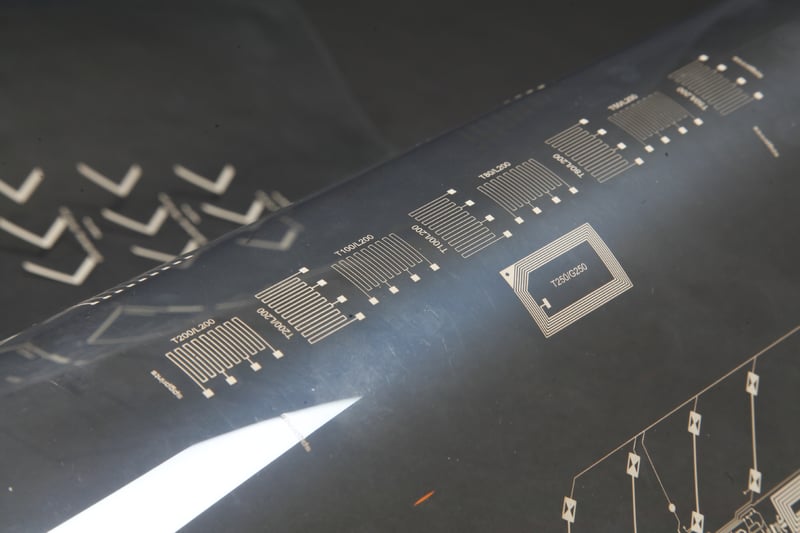Understanding Different Ink Types in Digital Textile Printing
Acid Inks are known for their vibrant colors and are ideal for printing on wool, silk, and polyamide materials. They form ionic bonds with the fabric, leading to high color brilliance. However, they require a pre-treatment process and subsequent steaming and washing, making them less straightforward to use.
Disperse Inks excel in high color brilliance and wash fastness on polyester fabrics. They are particularly useful for sportswear and fashion industries due to their resistance to light and thermal migration. Like acid inks, they also need pre-treatment, steaming, and washing.
Sublimation Inks are a game-changer for polyester fibers. These inks do not require steaming and washing, making the process more sustainable by reducing water and energy use. They are printed onto transfer paper and then heat-transferred to the fabric, ensuring high durability and vivid colors.
Pigment Inks stand out for their versatility. Suitable for both natural and synthetic fabrics, they do not need steaming or washing, significantly reducing water and energy consumption. Recent technological advancements have improved their runnability and color fastness, making them an excellent choice for home textiles and garments.
Reactive Inks are best suited for cellulose-based fibers like cotton and viscose. Known for their high color quality and wash fastness, these inks require a meticulous process involving pre-treatment, steaming, and washing to achieve the best results.
Assessing Fabric Types and Their Compatibility with Inks
Choosing the right ink begins with understanding the fabric you are working with. Each fabric type interacts differently with various inks, affecting the final print quality.
For natural fibers like cotton, linen, and silk, reactive and acid inks are the top choices. Reactive inks are particularly favored for their bright colors and high wash fastness, making them ideal for high-quality fashion items. Acid inks excel on silk and wool, offering vibrant hues and excellent durability.
Synthetic fibers such as polyester benefit from sublimation and disperse inks. Sublimation inks are perfect for polyester, providing a sustainable and efficient printing process without the need for post-processing. Disperse inks, on the other hand, offer exceptional color brilliance and are well-suited for sportswear and fashion items.
Blended fabrics present a unique challenge. Pigment inks are the most versatile option here, compatible with both natural and synthetic fibers. They are particularly effective for fabrics with a primary component between 50% and 99%.
Evaluating Color Strength and Gamut for Optimal Prints
Color strength and gamut are critical factors in achieving high-quality prints. The color gamut refers to the range of colors that can be produced by a specific ink set, affecting the vibrancy and accuracy of the printed design.
A digital printer typically uses CMYK (cyan, magenta, yellow, black) as base colors. However, additional colors are often incorporated to extend the gamut. Assessing the total color gamut rather than just the base colors is crucial for optimal results.
Using a color management tool can help you visualize the color space and compare different ink suppliers. By printing a color book and measuring the LAB values of each patch, you can determine which ink set offers the widest color space. This comprehensive evaluation ensures that your prints achieve the desired color depth and vibrancy.
Calculating the Total Cost of Ownership (TCO)
While it may be tempting to opt for the cheapest ink available, considering the Total Cost of Ownership (TCO) offers a more accurate financial perspective. The TCO includes not just the ink cost but also factors like runnability, durability, and yield.
Runnability and durability are essential for minimizing downtime and maintaining high-quality prints. Inks that are less purified may be cheaper but can cause frequent printhead clogs, increasing maintenance costs.
Yield is another crucial factor. Instead of focusing on ink consumption for a single design, calculate the number of sellable meters of textile produced over a longer period. This approach accounts for ink costs, consumption per design, waste, and failure costs from rejected fabric.
Incorporating Sustainability into Your Ink Selection
Sustainability is increasingly becoming a vital consideration in textile printing. Reducing your carbon footprint involves selecting inks that minimize environmental impact.
Pigment and sublimation inks are the most sustainable options, as they eliminate the need for steaming and washing, conserving water and energy. Conducting a lifecycle assessment can help you measure your environmental impact and make informed decisions.
Additionally, consider the ink supplier's commitment to sustainability. Look for certifications and official statements that demonstrate their adherence to environmental and social governance norms.
The Importance of Technical Support and Service Agreements
Technical support and service agreements play a crucial role in your ink selection process. Quality service agreements include installation, training, spare parts, and long-term cooperation with a reliable partner.
Engaging with your supplier about their service options ensures that you maximize your equipment's uptime, output quality, and lifespan. A strong partnership with your ink supplier can significantly enhance your printing process, leading to higher customer satisfaction and business success.
In conclusion, selecting the best ink for your digital textile printing needs involves a comprehensive evaluation of various factors, including fabric type, color strength, TCO, sustainability, and technical support. By making informed decisions, you can achieve high-quality prints that meet both aesthetic and functional requirements, ensuring your business stays competitive and sustainable.



